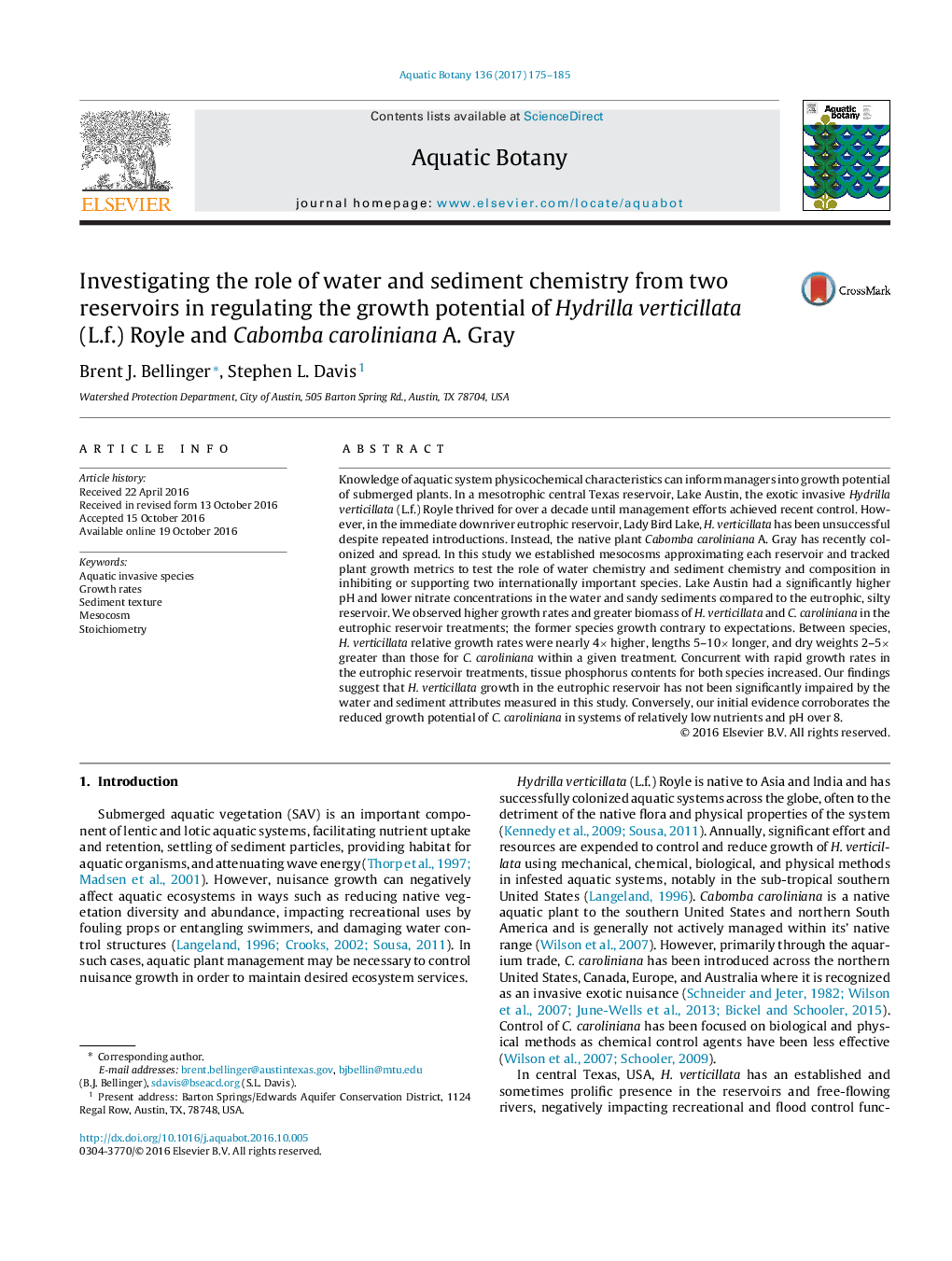| Article ID | Journal | Published Year | Pages | File Type |
|---|---|---|---|---|
| 4527532 | Aquatic Botany | 2017 | 11 Pages |
•Transplant mesocosm experiment for two macrophytes under different trophic conditions.•Hydrilla verticillata has significant growth potential in eutrophic conditions.•Failure of Hydrilla verticillata to colonize eutrophic system might be herbivore regulated.•Cabomba caroliniana growth impaired by low nutrients and high pH reservoir water.•Cabomba caroliniana may have minimal risk of spread in region based on water chemistry restrictions.
Knowledge of aquatic system physicochemical characteristics can inform managers into growth potential of submerged plants. In a mesotrophic central Texas reservoir, Lake Austin, the exotic invasive Hydrilla verticillata (L.f.) Royle thrived for over a decade until management efforts achieved recent control. However, in the immediate downriver eutrophic reservoir, Lady Bird Lake, H. verticillata has been unsuccessful despite repeated introductions. Instead, the native plant Cabomba caroliniana A. Gray has recently colonized and spread. In this study we established mesocosms approximating each reservoir and tracked plant growth metrics to test the role of water chemistry and sediment chemistry and composition in inhibiting or supporting two internationally important species. Lake Austin had a significantly higher pH and lower nitrate concentrations in the water and sandy sediments compared to the eutrophic, silty reservoir. We observed higher growth rates and greater biomass of H. verticillata and C. caroliniana in the eutrophic reservoir treatments; the former species growth contrary to expectations. Between species, H. verticillata relative growth rates were nearly 4× higher, lengths 5–10× longer, and dry weights 2–5× greater than those for C. caroliniana within a given treatment. Concurrent with rapid growth rates in the eutrophic reservoir treatments, tissue phosphorus contents for both species increased. Our findings suggest that H. verticillata growth in the eutrophic reservoir has not been significantly impaired by the water and sediment attributes measured in this study. Conversely, our initial evidence corroborates the reduced growth potential of C. caroliniana in systems of relatively low nutrients and pH over 8.
